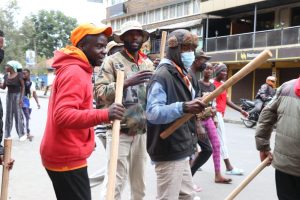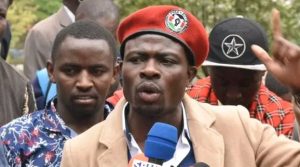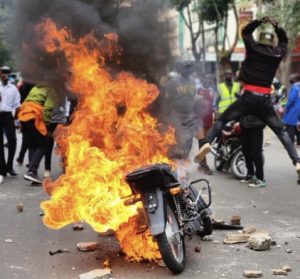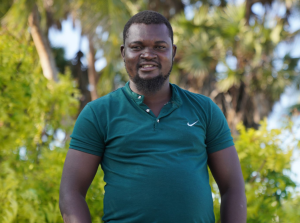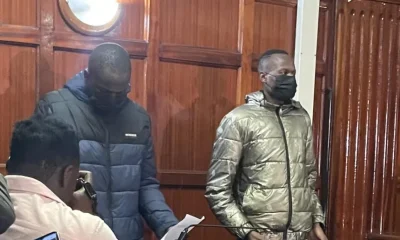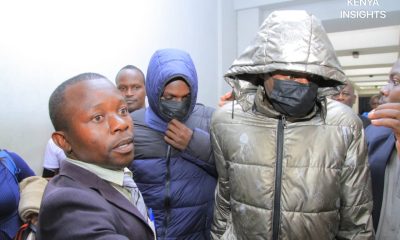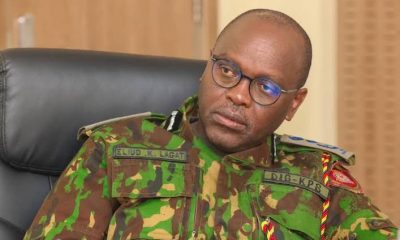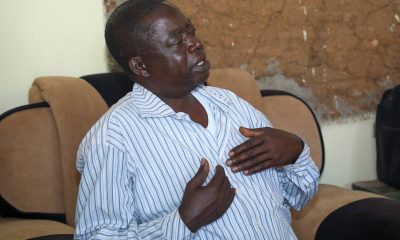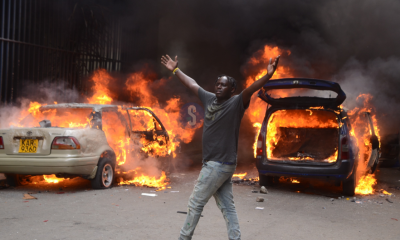Investigations
Inside Nairobi Protests Chaos: Goons Were Paid Sh2,000 and Promised Police Protection
Local coordinators and estate chairpersons, often serving as political mobilizers, were tasked with assembling teams of what sources describe as “goons” to counter the planned protests.
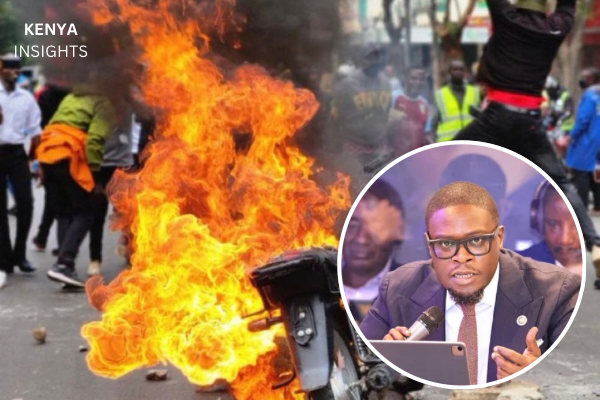
An investigation reveals the systematic recruitment and deployment of armed gangs to disrupt demonstrations following the death of blogger Albert Ojwang in police custody
The chaos that engulfed Nairobi’s Central Business District during Tuesday’s protests was not spontaneous but the result of a carefully orchestrated plan involving paid goons, political coordination, and alleged police complicity that began unfolding as early as Thursday, June 13, 2025.
An investigation by this publication has uncovered disturbing details of how hundreds of young men were recruited from informal settlements, armed with crude weapons, and deployed to disrupt demonstrations protesting the death of Albert Ojwang, a 31-year-old teacher and blogger who died in police custody.
The Recruitment Network
The operation centered on a systematic recruitment drive targeting youth from specific areas including Congo in Dagoretti North, Dagoretti South, and Mathare.
Local coordinators and estate chairpersons, often serving as political mobilizers, were tasked with assembling teams of what sources describe as “goons” to counter the planned protests.
“I was called on Monday evening and told there was a job if I was interested. I did not hesitate as I needed the money. I was promised Sh2,000 and told that the police had been briefed, so they wouldn’t harm us,” revealed one recruited individual from Kawangware in Dagoretti North who spoke on condition of anonymity.
The recruited youth were instructed to carry whips, clubs, and other crude weapons, with a clear directive: deal ruthlessly with the protesters. Boda boda riders who accepted the assignment were specifically told to carry two armed passengers each.
Assembly and Deployment
On the morning of June 17, the recruited goons assembled at a busy petrol station on Valley Road, where they received their payment and had their motorcycle fuel tanks filled to capacity before heading to the CBD.
“In the morning, I saw tens of motorcycles at the petrol station. Each had its fuel tank filled to capacity. Those present received Sh2,000 before heading to town,” confirmed a fuel attendant at the station.
As they rode toward the city center, witnesses reported seeing the riders and passengers waving whips while chanting, “Hatutakubali maandamano hii town! (We won’t allow protests in this town).”
However, conflicting reports have emerged about the payment amounts.
Amnesty International Executive Director Houghton Irungu has claimed that individuals who infiltrated and disrupted the peaceful justice for Ojwang protests on Tuesday, June 17, 2025, were paid a mere Ksh200, while other sources, including one of the goons under duress, stated they “were paid Sh1,000 to disrupt the planned protests.”
Political Warnings and Threats
In the days leading up to the protest, several political figures issued stern warnings to potential demonstrators.
Nairobi Governor Johnson Sakaja, speaking during a church service attended by President William Ruto in Kakamega County, declared: “I want to tell youths in Nairobi, demonstrating for your rights is allowed, but we will not allow the destruction of property again. That will never happen again in Nairobi… So don’t try it, you’ll find me in town.”
Korogocho MCA Absalom Odhiambo, also known as Matach, was captured on video urging Governor Sakaja to mobilize youth to work alongside police in managing protesters.
“Governor Sakaja formed a youth group and paired them with police so anyone trying to cause chaos would be dealt with accordingly,” Odhiambo stated.
Activist Calvince Okoth, known as Gaucho, had also warned demonstrators against protesting but later denied involvement, claiming he was out of the country during the protests.
The Unholy Alliance
What distinguished the hired goons from legitimate protesters was their apparent coordination with law enforcement.
They walked beside officers, despite being visibly armed with pangas, clubs and whips.
This collaboration was witnessed by numerous observers and captured in photographs showing armed civilians operating alongside uniformed police officers.
Today’s protests took a sinister turn as police officers and hired thugs joined forces in plain sight.
In a scene both brazen and unsettling, hired goons arrived on motorbikes, others armed with clubs and whips terrorizing innocent passers-by all under the approving gaze of security forces.
Some goons were reportedly heard giving instructions to anti-riot officers, telling them when and where to deploy tear gas against protesters.
When Plans Went Awry
The hired operatives soon found themselves outmatched when they encountered determined protesters on Moi Avenue.
Several goons were assaulted by demonstrators, and some of their motorcycles were set ablaze.
One rider attempting to escape was cornered on Koinange Street and beaten by protesters who demanded to know who had hired them.
“We didn’t know we were coming to fight the protesters. We were told we were guarding shops from looters,” claimed one of the hired individuals, suggesting that some participants were misled about their actual mission.
Official Responses and Denials
State House distanced itself from the chaos, with spokesperson Hussein Mohammed stating that “Matters related to public order, safety and law enforcement fall within the mandate of the police, under the Inspector-General, who operate independently in the execution of their duties.”
Governor Sakaja later condemned the violence, stating: “We categorically dissociate ourselves from any gangs, militias, or politically sponsored groups that exploit demonstrations to engage in criminal activity.”
However, witnesses reported seeing some goons near City Hall, apparently hailing the governor for allowing them to “secure the city.”
Government Spokesperson Isaac Mwaura dismissed suggestions that the goons represented government interests, insisting that “all Kenyans have the constitutional right to express their political opinions.”
Police spokesperson Michael Muchiri Nyaga denied any collaboration with goons, calling such suggestions “preposterous.” He warned that “Photos don’t disappear. Action will be taken” against those captured breaking the law.
Law Society of Kenya President Faith Odhiambo condemned the violence as a sign of rising anarchy, denouncing what she called the “barbaric conduct” of militia-like groups working in coordination with police.
“Those who came in motorbikes were in groups and were armed and were paid by some politicians and senior officials at City Hall to harm the protestors,” one of the riders told The Standard newspaper.
The deployment of paid goons represents a troubling escalation in Kenya’s approach to managing civil demonstrations.
President William Ruto condemned Ojwang’s death as “heartbreaking and unacceptable.” The EU, U.S., and U.K. have all called for a transparent investigation.
Ojwang, 31, was a teacher and father whose “last known communication was a plea for bail,” after being arrested for allegedly defaming a senior police officer through his blog posts exposing police corruption.
The truth, as confirmed by a postmortem, is that he was beaten to death.
His death has sparked widespread outrage and calls for police accountability in a country where at least 60 people were killed last year during a crackdown by security forces on protests over contentious tax legislation, the youngest a 12-year-old boy who was shot in the back.
Investigations Continue
As investigations into the June 17 chaos continue, questions remain about the extent of political involvement in recruiting and deploying armed goons against peaceful protesters.
The systematic nature of the recruitment, the specific payment amounts, and the apparent coordination with law enforcement suggest this was not an isolated incident but part of a broader strategy to suppress dissent.
The events in Nairobi have drawn comparisons to similar tactics used across East Africa, where governments have increasingly turned to non-state actors to supplement official security forces in managing civil unrest.
With more protests planned, including a mass demonstration scheduled for June 25, the revelations about paid goons and their alleged police protection have only intensified calls for accountability and reform in Kenya’s approach to handling civil demonstrations.
Kenya Insights allows guest blogging, if you want to be published on Kenya’s most authoritative and accurate blog, have an expose, news TIPS, story angles, human interest stories, drop us an email on [email protected] or via Telegram
-
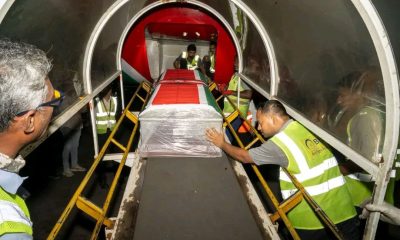
 News6 days ago
News6 days agoPlane Carrying Raila Odinga Becomes World’s Most Tracked Flight as Kenya Airways Honors Him With Special Call Sign ‘RAO001’
-
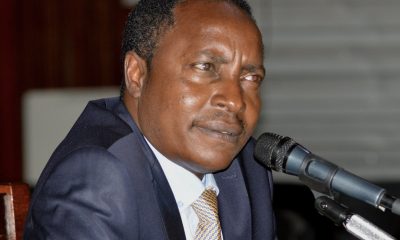
 News2 weeks ago
News2 weeks agoFormer Nairobi CEC Newton Munene Found Dead as Sonko Alleges Cartel Involvement
-

 News6 days ago
News6 days agoI Used To Sleep Hungry, But Today I Employ The Same People Who Once Laughed At My Poverty
-
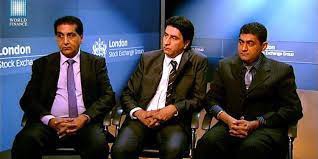
 Investigations6 days ago
Investigations6 days agoKwale Sugar Faces Liquidation Guillotine as Supreme Court Slams Door on Last-Ditch Rescue Bid
-

 News4 days ago
News4 days agoMaurice Ogeta, Raila’s Bodyguard: The Shadow Who Became The Story
-

 News1 week ago
News1 week agoInside 17 Minutes: CCTV Footage Reveals Murdered State House Guard Was Well Known to The Killer
-

 Business14 hours ago
Business14 hours agoSafaricom’s Sh115 Trillion Data Breach Scandal: How Kenya’s Telecom Giant Sold Out 11.5 Million Customers
-
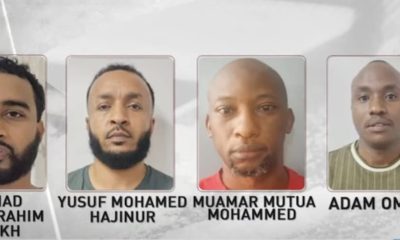
 News1 week ago
News1 week agoFour Arrested In JKIA Cocaine Cartel Crackdown

